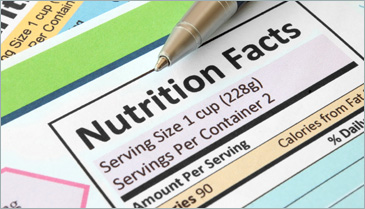 By Dr. Mark Hyman
By Dr. Mark Hyman
“If it has a label don’t eat it,” is what I preach. However, there are some exceptions. But think about this: If there is a health food section in the grocery store, what does that make the rest of the food sold there? The general rule: If it has any ingredients you don’t recognize or pronounce, put the item down. Be a smart label reader. Labels contain both the ingredients and specific (but not all) nutrition information. Here are keys to know about contents listed on labels included on packaged foods.
Beware of marketing. Remember, the front of the label is food marketing at its cleverest. It is designed to seduce you into an emotional purchase and may contain exaggerated claims. Anything with a health claim is almost guaranteed to be bad for you—diet this or low-fat that or trans fat free or low calorie or cholesterol lowering. Look for quality ingredients. Organic whole foods are now available in packages, cans and boxes.
Where is the ingredient on the list? Ingredients are listed in descending order by proportion or quantity. If the real food is at the end of the list and the sugars or salt is at the beginning of the list, beware. Think five or less. If it is a real food product, it usually has less than five ingredients. Some newer healthier products contain more, but they are all real food.
Beware of ingredients not on the list. Foods that are exempt from labels include foods in very small packages, foods prepared in the store, and foods made by small manufacturers.
Look for additives or problem ingredients. If it has high fructose corn syrup, hydrogenated, or partially hydrogenated oils, put it back on the shelf. Search for any “suspect” additives.
Look for ingredients that don’t agree with you. Identify food ingredients you are sensitive or react to, such as gluten, eggs, dairy, tree nuts, or peanuts. Be vigilant about reading labels, as these ingredients are often “hidden” in foods you least suspect. The labeling of common allergens is not always clear or helpful and there have been recent recommendations to improve this for consumers as in the Food Allergen Labeling and Consumer Protection Act 2004. (See www.celiac.com for lists of gluten containing foods.)
Would your great-grandmother have served this food? Finally, before you analyze the numbers, ask yourself if this food could have been served at your great-grandmother’s table. She only served real food.




